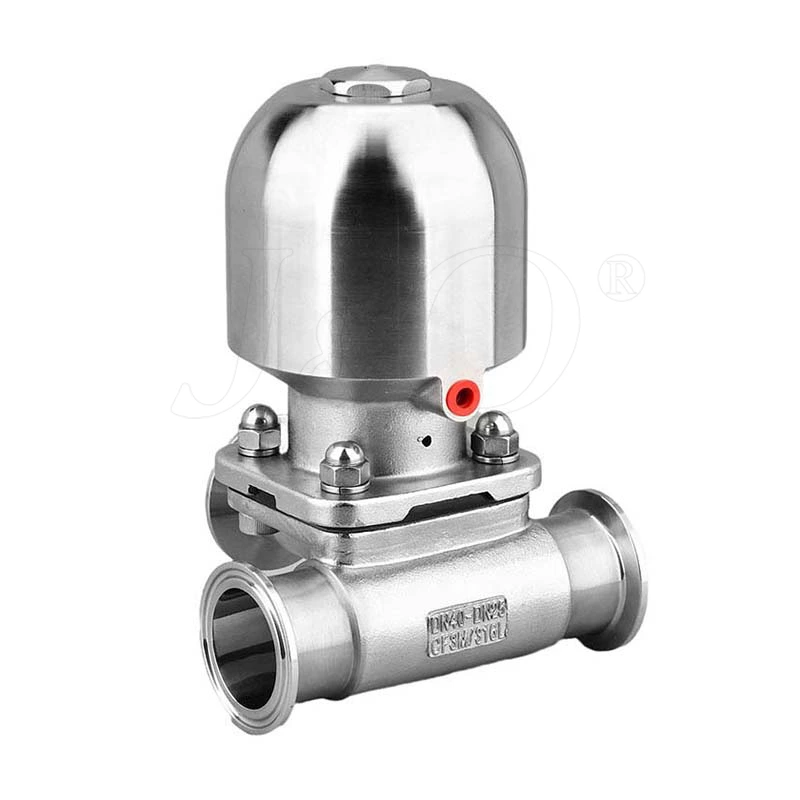Eight Structural Features Of Pneumatic Diaphragm Valve
Sanitary Diaphragm Valve is a special form of cut-off valve that appeared in the 1920s. Its opening and closing parts are a diaphragm made of soft material, which separates the inner cavity of the valve body from the inner cavity of the valve cover and the driving components, so it is called a pneumatic diaphragm valve. The most prominent feature of the pneumatic diaphragm valve is that the diaphragm separates the inner cavity of the lower valve body from the inner cavity of the upper valve cover, so that the valve stem, valve disc and other parts above the diaphragm are not corroded by the medium, eliminating the packing seal structure and preventing the medium from leaking out.
Eight structural features of pneumatic diaphragm valve:
1. A set of thin hemispherical metal films are clamped in the valve body as a barrier between the valve stem and the fluid.
2. The closing of the pneumatic diaphragm valve is achieved by the valve stem head and the metal film pressing the valve disc on the valve seat.
3. The opening of the pneumatic diaphragm valve is through an internal spring. When the valve stem rises and breaks away from the contact with the film, the valve disc rises.
4. Since the stroke of the valve is equal to the stroke of the film, the characteristic lift of this valve is much smaller than that of ordinary valves.
5. In order to overcome the resistance loss caused by low lift, the valve seat and flow area are larger than those of ordinary valves, in order to obtain a larger flow rate.
6. Since the valve seat of this pneumatic diaphragm valve is larger, its force is much greater than that of ordinary valves, so as to obtain sufficient sealing force on the valve disc, because there is no direct contact between the valve stem and the valve disc.
7. The valve disc will not leave the valve seat through the valve stem, so this valve is suitable for unidirectional flow with pressure difference, and the medium usually comes from "under the valve seat". However, a large amount of backflow should be avoided during use to avoid affecting the closing of the valve.
8. Generally speaking, it is economical and effective to use metal diaphragm valves under high temperature and high pressure. This valve can also be used in low temperature and low pressure occasions where synthetic rubber diaphragm valves are not desired.
